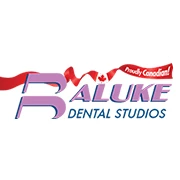The Growing Role of Digital Integration in Dentistry
Dentistry has undergone a significant change in the manner procedures are provided and received, particularly by the new expansion of technology. The rapid integration of sophisticated technology in both clinics and dental laboratories is a driving force in this evolution. These labs are now being sent digital scans directly from dentists, meaning they are able to manufacture restorations a lot more precisely and more quickly. Dental labs have become the bridge between yesterday’s tools and materials and the expectations of the present. The partnership between dentists and dental labs is also advancing, making things more streamlined and how they will turn out.
Intraoral Scanning and Instant Accuracy
One of the most disruptive changes in the place of traditional impressions has been the use of intraoral scanners in clinical workflows. This process cleans up the “gunk” and mush involved with impression taking, while providing crystal-clear digital models of the patient’s teeth. These scans are immediately sent to dental labs, where technicians can get to work right away. The results are easier case challenges, fewer errors, and gains in the procedural reliability overall. Teaming up with digital-ready dental labs, clinics can decrease chair time, streamline communication channels, and optimize patients' experience.
CAD/CAM Design Boosts Production Speeds
CAD/CAM (Computer-Aided Design and Manufacturing) is today an important tool for dentists. Now, dentists and lab techs are designing not just crowns, bridges, and veneers, but even full arches, in sophisticated software. The digital plans can be altered on the fly, so the restoration comes out tailored to the patient. Once the design is finalized, it is then milled or 3D printed at a dental lab, taking out a lot of the in-office variables relating to manual approaches. With the use of CAD/CAM integrated within the clinical workflow, dental labs assist dentists in delivering care faster and more predictably, especially in busy practices.
Common Errors Reduced With the Help of Online Collaboration
Prior to the broad acceptance of digital workflows, this lack of communication between practices and dental labs often resulted in remakes and delayed deliveries. Now with the implementation of digital case submission, everything from shade selection, biting records, and margin information is included and available. This minimizes the likelihood of inaccurate and unnecessary corrections, and in turn also saves time and resources. From the Dental lab perspective, an exact digital footprint of each case serves the lab well, and as for the Clinic, consistent and trusted high-quality is the name of the game. Benefits: Strong Digital Collaboration between Dentist and Lab, and the result is a more predictable workflow.
Advanced and Aesthetic Procedures
Complex treatments such as full mouth rehabilitations, implant rehabilitation, and cosmetic smile makeovers demand precision and teamwork. Digital workflows facilitate these requirements, as virtual planning and simulations can be performed prior to the start of any clinical procedure. Dentists can use dental labs to analyze digital wax-ups, detail aesthetic objectives, and pre-plan surgical guides for implant procedures. And by digitally planning, it ensures that everyone is on the same page before treatment starts, reducing surprises and adjustments in the operating room and afterward. As our procedures become more complex, the added value of digitally integrated dental labs becomes ever greater.
Shorter Time to Service, Higher Patient Satisfaction
Today’s dental market is very competitive and the patient demands fast and precise results. Restorations can be delivered within days or even 24 to 48-hour restorations without anyone in your office having to leave the practice. This is efficient for the practice as well as the patient, minimizing wait times and enhancing satisfaction. With the ability to produce a digital range from a single crown to a full arch prosthetic, digital workflows allow dentists to hit production deadlines without compromising quality and surpass patient expectations. The faster a dental lab can respond to digital needs, the more a modern practice can grow and do what we do best.
Conclusion:
With further advances in technology, it is likely that digital processes will be at the forefront of progress in clinical dentistry. And all of that is made easier and better by the digital strength of today’s dental labs exchanging information, thereby restoring accuracy and production time. Dentists Who Adopt This Paradigm Shift Will Be Positioned to Deliver Better, Faster, More Predictable, and More Aesthetic Procedures. After all, dental labs are not behind-the-scenes suppliers anymore; they are strategic partners in delivering superior patient care and shaping the future of digital dentistry.



